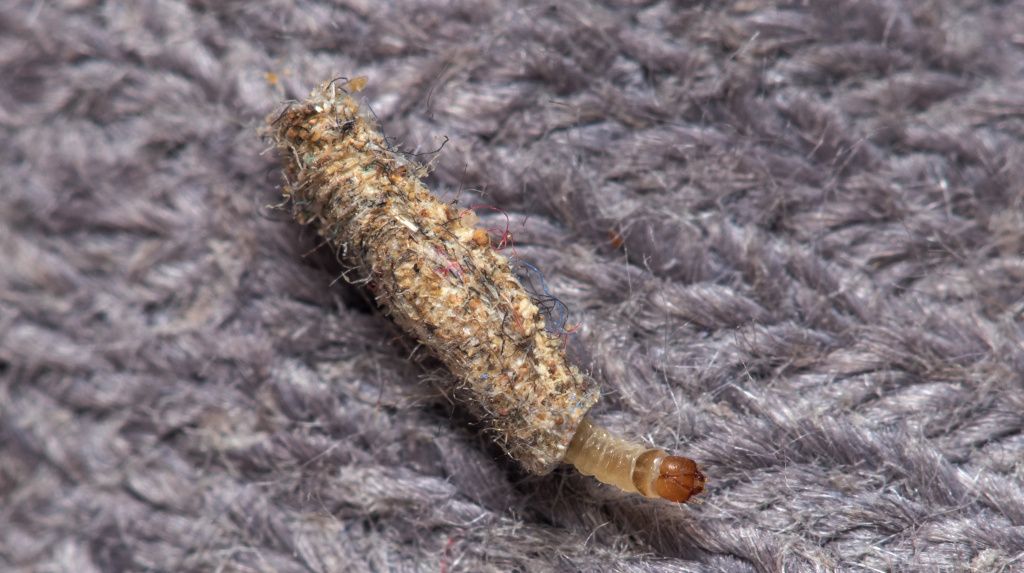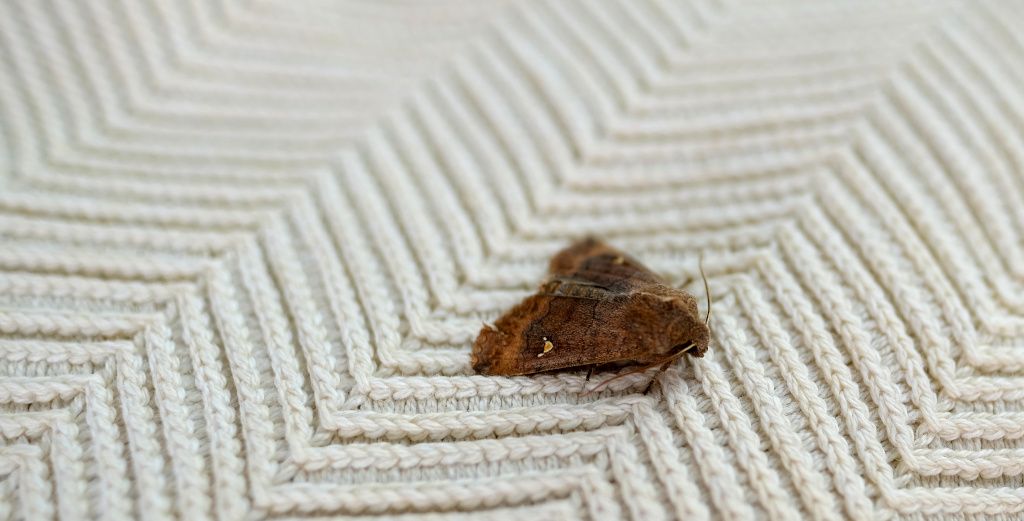Clothes moths can be a frustrating pest, causing damage to your valuable textiles and clothing. The damage they inflict, often in the form of unsightly moth holes, compromises the integrity of your garments, leaving you dismayed at the sight of your once-pristine clothes. These tiny intruders have a knack for infiltrating even the most well-kept wardrobes, and their insidious activities can’t be overlooked.
Fortunately, there are several effective methods to tackle this problem and protect your belongings. In this guide, we’ll delve into the intricacies of dealing with these bothersome pests and explore how to get rid of clothing moths & clothes moth larvae, ensuring the safety of your cherished fabrics.
Understanding the factors that attract these unwelcome visitors is essential. Clothes moths are naturally drawn to textiles made from natural fibers like wool, silk, and cashmere. These natural fibres from materials provide them with the sustenance they need to thrive, especially when combined with skin cells and debris that can accumulate on our garments over time.
Leaving windows open might seem like a refreshing way to allow fresh air into your home, but it can inadvertently invite moths inside. They are attracted by outdoor lights and can flutter their way into your living spaces via open windows, seeking out cosy spots like wardrobes and closets to lay their eggs. That’s why a vigilant approach is necessary to prevent a full-blown infestation.

One of the telltale signs of a clothes moth infestation is a musty smell emanating from your wardrobe. This scent is produced by the pheromones released by male clothes moths to attract females for mating. If you notice this odour, it’s an indicator that your wardrobe might be harbouring unwanted guests.
The damage caused by these pests can be insidious. Those seemingly innocent-looking holes in your clothes are, in fact, the result of their voracious appetite for natural fibers. Moth holes are the visible evidence of the invisible havoc being wreaked by these tiny larvae.
Now that you’re well-versed in the nuances of the issue, it’s time to explore the array of solutions at your disposal. From preventative measures to targeted eradication techniques, we’ll equip you with the knowledge you need to protect your wardrobe from the relentless onslaught of clothes moths. By the time you’ve finished reading, you’ll be armed with the expertise to outsmart these pests and preserve your treasured garments.
Identify the Problem
Clothes moths can often be mistaken for other insects, so it’s important to correctly identify them and moth larvae. Keep an eye out for small, fluttering moths in your living spaces, especially near your wardrobe or storage areas.
Additionally, inspect your clothing for irregular holes, as this is a telltale sign of clothes moth damage.
Identifying the problem accurately is the first step towards effective eradication. Understanding the life cycle of clothes moths, including the clothes moth larvae stage, helps you target them more effectively.
Clean and Vacuum
When cleaning your wardrobe, take extra care to remove all clothing items and give them a good shake to dislodge any hidden moth larvae. Using a vacuum cleaner is a crucial step in this process, as it helps kill clothes moths but also eliminate moth eggs and moth larvae.
Use a nozzle attachment to reach into corners, cracks, and folds where moths and moth larvae might be hiding.
After vacuuming, dispose of the vacuum bag outside to prevent any potential reinfestation from moth larvae. High temperature washing is also effective in killing moth eggs and moth larvae, ensuring a deep clean for your clothes.
Wash or Dry Clean
Before returning your clothes to the wardrobe, thoroughly wash clothes as moths are attracted to worn clothes.
you should clean or dry clean each item & try to use a professional dry cleaner for this. This step is particularly important for items that can’t be easily washed.
Dry cleaning, which involves high temperatures and chemical treatment, is effective in killing both adult moths and killing moth larvae.
When washing, use hot water and ensure that the clothes are completely dry before storing them. Properly washed and dried clothes discourage adult moths from laying eggs on the natural fibres.
Use Moth Repellents
Natural clothes moth repellents such as bay leaves, lavender, and cedarwood are a gentle yet effective way to repel moths and keep clothes moths at bay. Lavender, cedarwood, and rosemary are not only pleasant-smelling but also repugnant to moths.
Consider using essential oil sachets or cedarwood blocks to deter moths. Remember to refresh these repellents every few months to ensure their effectiveness over a long period. These natural remedies help to repel moths and protect your soft furnishings.
Store Things Properly
Proper storage practices such as an airtight bag are key to preventing future infestations. Before you store clothes, make sure they are completely clean and dry, as organic residues attract moths.
Opt for airtight containers or vacuum-sealed bags for off-season clothing. When hanging clothes, ensure there’s enough space between them to promote airflow and discourage moth infestation.
Using plastic bags for sealing clothes can also prevent moth infestations, especially during freezing temperatures.
Regular Inspection
Regularly inspecting your wardrobe and storage areas helps catch potential infestations early. Take time every few weeks to examine your clothing for signs of moths, such as larvae or small holes.
If you do find any signs of infestation, take immediate action to prevent it from spreading. Keeping garment bags sealed and periodically checking for pantry moths can help maintain a pest-free environment.
Professional Help
If your moth infestation is severe or persistent, consider seeking professional pest control services, such as Sykes Pest Control. Experienced professionals can assess the situation, offer targeted solutions to get rid of clothes moths, and ensure that your clothes moth problem is effectively resolved.
In conclusion, dealing with clothes moths requires a combination of preventive measures and proactive actions. By keeping your wardrobe clean, using natural repellents like moth repellent, and maintaining proper storage practices, you can protect your clothing and textiles from these pesky pests.
Remember that consistency is key, and regular maintenance, such as washing clothes and maintaining natural fibers, will help keep your belongings moth-free for years to come.
For expert assistance in tackling stubborn clothes moth infestations, you can rely on Sykes Pest Control. With their knowledge and experience, you can trust them to provide tailored solutions that suit your specific needs.
So, don’t let clothes moths take a bite out of your wardrobe. Follow these steps to kill moths and prevent them or contact Sykes and enjoy the peace of mind that comes with a moth-free home.

